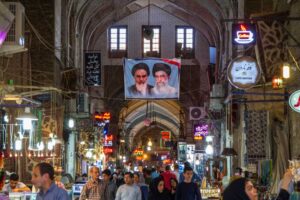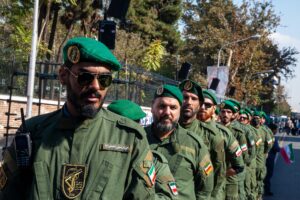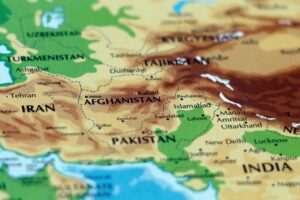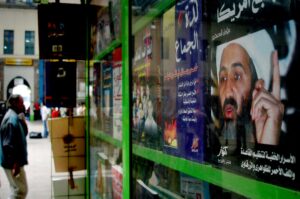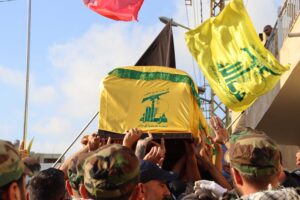The Persian Gulf is of great importance, both in terms of energy resources and because it is a strategic passage for regional trade. Fundamentally, the internal security of countries in any region is inseparable from the wider security of that region, while the interests of supra-regional powers are also closely related to the region’s security arrangements. Therefore, the security of the Persian Gulf is of key national, regional, and international importance. Consequently, the countries of the Persian Gulf and supra-regional powers alike have often sought to establish arrangements in the region to ensure their security and interests.[i]
Yet, visions of the form that the Persian Gulf security order should take differ considerably across the region. Iran perceives the alliances between Arab countries and the United States as a threat. The Arab states of the Persian Gulf, however, consider Iran’s geopolitical and ideological ambitions to expand its influence threatening. Accordingly, these countries have formed alliances with major powers, including the United States, to counter the perceived Iranian threat and strike a balance. This has led to a “security dilemma” in the Persian Gulf.[ii]
Iran’s ideal vision of the Persian Gulf security order
As a result of Iran’s geostrategic position, the Persian Gulf has long represented the main focus of Iran’s foreign policy as well as one of its most sensitive security issues. In both ancient and modern times, the Persian Gulf has held a particular sensitivity for Iran. The discovery of oil in the technological age, and the attendant transformation of the Persian Gulf region into one of the richest energy centers in the world, have increased this sensitivity and importance.
Prior to the 1979 revolution, Iran, as an ally of the United States, was one of the cornerstones of the security arrangements established by the Western bloc in the region. Before 1979, the region’s security policy was based on the unconditional support of the United States and enforced by Iran as the ‘gendarme’ of the region. In Iran, the ruling regime sought to cooperate with the United States as the dominant foreign power in the region in order to secure the Persian Gulf. The Baghdad Pact, subsequently known as the Central Treaty Organization (CENTO), and President Richard Nixon’s ‘twin pillars policy’ were among the strategies that shifted the security structure of the region.
After the 1979 revolution and the shift in Iran’s foreign policy from an alliance with the United States to a policy of non-alignment, Iran’s view of the Persian Gulf security system also changed. With the removal of the monarchy in Iran and the creation of the Islamic Republic, Iran sought to establish security arrangements independent of supra-regional powers. It withdrew from the security arrangements created by the United States in the Persian Gulf and announced its opposition to the presence of foreign forces in the region. The United States’ strategy toward Iran also changed and became more hostile.
Since its establishment, the Islamic Republic of Iran has been particularly concerned by the convergence and cooperation of the countries in the Persian Gulf with the United States. Meanwhile, Gulf Arab countries have long been wary of Iran. During the Shah’s reign, Iran was a regional hegemon, which Gulf Arabs saw as a threat seeking regional domination, and its alliance with Israel was perceived as a move to destroy Pan-Arabism.[iii] In the eyes of the Arab states, the Iranian revolution merely replaced the threat of Persian nationalism with that of Shiite radicalism.[iv]Indeed, the revisionist interpretation of Islam post-1979 is in direct conflict with the conservative Islam of the Arab kingdoms of the Persian Gulf region. Some thinkers, including Shireen Hunter, believe that this revisionism is geopolitical in nature, not religious; one could argue that Iran is pursuing geopolitical goals in the form of Islamist slogans.[v]
The Iranian revolution was a decisive turning point as it shifted the situation from a pattern of quiet competition to one of overt tension. The Gulf states felt deeply threatened by the overthrow of the Pahlavi monarchy and Iran’s revolutionary message as well as by the incitement of Shia unrest and subversive political and terror activities. This led to their supporting Iraq against Iran in the 1980-88 war. In 1981, the Gulf states formed the Gulf Cooperation Council (GCC), a political and security alliance that instituted a collective security framework. Some states, however, saw this as merely an extension of Saudi leadership over its smaller neighbors, which bred frustration.[vi] Oman, Dubai and, to a lesser extent, Qatar maintained relations with Iran during this period, demonstrating a tendency for foreign policy independence that has continued.
The growing US involvement in regional security since 1979 is another key factor behind increased tensions between the Gulf states and Iran. The former has long relied on the US security guarantee, while the latter wholeheartedly opposes US influence in the region. US–GCC security cooperation was formalized during the Iran-Iraq War but grew significantly after the 1990 invasion of Kuwait by Iraq. The US has operational bases in, and defense agreements with, Bahrain (home of the US Fifth Fleet), Qatar (home of the forward headquarters of US Central Command), the UAE, Kuwait and Oman. All of these countries host US troops and benefit from US arms sales. Domestic politics has limited an overt US presence in Saudi Arabia, but covert cooperation continues. As well as curbing Iran’s expansion, US security assurances have also prevented intra-GCC tensions from escalating, as seen when Qatar used its military agreement with the US to protect itself from potential Saudi aggression in 2017.[vii]
Iran’s perspective is that regional actors should manage regional security issues and thus opposes the presence of major supra-regional powers in the region. It does not consider the presence of the great powers as a factor of stability and security, but rather as a factor of tension and conflict. Further, Iran sees the alliance of the countries of the region with the United States and other Western powers as a threat to itself.[viii]The Gulf states, however, perceive this argument as cover for Iran’s own ambitions. Yet, since Iran is a secondary power compared to the US and because it is opposed to its presence in the region, Iran is often removed from security arrangements in the region, at the behest of the US.[ix]
Thus, Iran’s view of the security arrangements in the Persian Gulf is in stark contrast to that of the United States and members of the Gulf Cooperation Council. While Iran considers the presence of the United States and foreign countries as the main cause of insecurity, the Arab countries in the region have resorted to appealing to, mainly Western, powers for their own security. Therefore, Iran’s ideal security order is not only at odds with those of other regional countries but is also conceived of as a threat that is aimed primarily at strengthening the balance of power in Iran’s favor. Accordingly, one may posit, the proposal of the “Hormuz Peace Initiative”, made during Hassan Rouhani’s presidency, was not approved by the countries of the region due to its emphasis on involving China and Russia more heavily in the region, thereby shifting the balance of power away from the Arabs and towards Iran.[x]
The United States’ ideal vision of the Persian Gulf security order
The Middle East and its sub-region, the Persian Gulf region, is a region of international importance due to its energy resources and its geopolitical, geostrategic and geo-economic positions. The history of developments in the Middle East in recent decades shows that ensuring order, security and stability has been the priority of the countries of this region and supra-regional powers. In the last half century, several efforts have been made in this direction by regional and supra-regional powers in the Persian Gulf, each of which has failed as a result of a lack of attention to important regional components.
Prior to 1971, Britain regulated the security order of the Persian Gulf. In fact, the British presence in the Persian Gulf region meant that the region was not able to form an indigenous security order. Current turmoil in the region can therefore be considered related to Britain’s presence, for, in the absence of an external factor, the endogenous order among the countries bordering the Persian Gulf could not have formed. As Graham E. Fuller in ‘The Center of the Universe: The Geopolitics of Iran’ argues, the presence of foreign forces in the Persian Gulf region has prevented the formation of natural order in this region.[xi]
After Britain withdrew from the Persian Gulf in the 1970s, according to the Nixon Doctrine and the ‘twin pillars policy,’ Iran and Saudi Arabia were made the ‘gendarmes’ of the region. Following the 1979 Revolution of Iran and the collapse of the twin pillars model, we are witnessing a greater American presence in the region. The Iraqi invasion of Kuwait also made the US become more regionally involved, and the GCC countries are under the umbrella of US support; an order in which, notably, Iran and Iraq were absent and consider to be a threat.
After the first Gulf War in 1991, US bilateral security agreements with Arab states strengthened. With the US invasion of Iraq in 2003, within the framework of the hegemonic security model, Washington’s influence on the security equations of the Persian Gulf greatly increased, and in fact, the United States became a key element in regional security. During this period, important geopolitical and geo-economic changes in the Persian Gulf have led to the development of US security policies in the region in the form of a network security system. This security network is complex and largely based on controlling Iran and supporting pro-US Arab regimes in the region by establishing bilateral relations.[xii]
Qatar currently has the largest US air base in the Middle East, the Al Udeid Air Base. Another important US base in the Persian Gulf is Al Dhafra Air Base in the UAE, and Bahrain holds the official base of the US Fifth Fleet. In terms of other western supra-regional powers, Britain, 43 years after leaving eastern Suez, has established a naval base in Mina Salman, Bahrain, signaling its permanent return to the region. France also has a permanent presence in the Persian Gulf with the establishment of a joint naval-air ‘Peace Base’ in Abu Dhabi.[xiii]
A brief overview of the size of the US military presence in the Persian Gulf region clearly shows that the security order in the region is hegemonic. US hegemony in the region is, of course, based on the cooperation with Arab regimes. The U.S implements different strategies to maintain or optimize its desired regional system (here, hegemony). These strategies include:
- Assuring regional governments by expanding regional security protections;
- Multilateral arrangements;
- Deterring and restricting attackers;
- Reducing conflicts through mediation and protection of regional arrangements;
- Deterrence and negative punishments;
- Negotiation-based diplomacy to increase peacebuilding by a system of control or hegemony based on cooperation.[xiv]
Meanwhile, the Islamic Republic of Iran has always disagreed with US policies and strategies in the region. Four decades of struggle for influence in the Persian Gulf region between the Islamic Republic of Iran and the United States, albeit with ups and downs, has always continued in various ways. Especially after the withdrawal of the United States from the nuclear deal in 2018, we saw an increase in tensions in the region.
Arab countries’ ideal vision of the Persian Gulf security order
The Persian Gulf’s security order has long been based on the rivalry and enmity between Iran and the Arab states. From the time of Britain’s regional presence until its withdrawal in 1971 and subsequent replacement by the United States, the region’s ruling order has been characterized by external interference and competition between Iran and its neighbors. Iran’s 1979 revolution has also ensured that relations have remained strained.
Due to perceived threats and ideological, political, religious, and ethnic differences between the Arab countries and Iran, the Gulf Cooperation Council (GCC) was formed in 1981 to confront and contain Iran and, of course, Iraq. But the most important factor in forming the GCC was Iran’s 1979 revolution, which increased the threat of Tehran exporting its revolution abroad, and the start of the Iran-Iraq War, which resulted in significant regional insecurity. In addition, after Iran’s revolution and withdrawal from the Central Treaty Organization (CENTO), Iran lost its status as a strategic bulwark against the Soviet Union and instead became the greatest danger to its neighbors.[xv]
Another determining factor is related to America’s performance and strategy in the Persian Gulf region. Before the beginning of the Iran-Iraq War, the Persian Gulf provided about 60% of the world’s oil consumption. However, after the outbreak of hostilities, both countries’ oil exports decreased significantly and the possible that the war could expand, and impact neighboring countries’ production capacity also rose. Such a scenario was a severe threat to the economies of both the region and the West. Therefore, the goal of American foreign policy, like the countries in the south of the Persian Gulf, was to prevent the possible spread of war and, in this regard, support defensive initiatives to stabilize global oil markets.[xvi]
Thus, the United States devised a number of Persian Gulf security arrangements in the 1980s which focused on extensive cooperation between the United States and the GCC countries as well as Iraq—despite the latter’s relative cooperation with the Soviet Union. Iran was the only state isolated from this system,[xvii] which sought to maintain a balance of power between Iraq and Iran, on the one hand, and to create a ‘Rapid Reaction Force’ to come to the GCC’s defense against pro-Islamic revolutionary forces, on the other, to secure the interests of the US and its allies.
Towards a new security order in Persian Gulf
The security model of the Persian Gulf region should be able to guide the countries of the region away from playing a zero-sum game towards a variable-sum game. This is important as the continuation of the zero-sum game has not only failed to provide regional security, but has also further fueled the ‘security dilemma’ in the region.[xviii]
According to Kenneth Pollack, an American analyst, a security order for the region must meet three goals:
1. It must make all Gulf states feel safer. In other words, the plan cannot move forward until all member states feel secure.
2. It should be aimed at simplifying, not complicating, regional problems. Accordingly, linking the region’s security to that of other regions and involving external actors makes it more difficult to guarantee the region’s long-term stability.
3. It must be flexible and strong enough to withstand internal and external changes.[xix]
Accordingly, the region needs a security mechanism that all regional states can agree to via a dialogue forum. But how can such a mechanism be created? To examine this issue, we must look at the current security mechanisms in different regions.
The Gulf Cooperation Council
The Gulf Cooperation Council, established in 1981 to counter Iran and Iraq, failed in the long run to shift from being a de facto to a formal military pact. Strong disputes between countries such as Saudi Arabia, the UAE and Bahrain, and Qatar have not been resolved in accordance with the GCC’s statutes. This suggests that there are major problems within the Council.[xx]
The Association of Southeast Asian Nations
The Association of Southeast Asian Nations (ASEAN) may also be a model for cooperation between the countries of the Persian Gulf. It should be noted, however, that the organization has not made good progress on security issues. One of the reasons for this is the demographic heterogeneity of the members of this union. On the other hand, since the Bali summit in 1976, the organization has focused more on economic cooperation. The Persian Gulf countries can learn valuable lessons from the experiences of the Asia-Pacific and European countries in constructing their own security order.[xxi]
Commission on Security and Cooperation in Europe and NATO
Another model for the Persian Gulf security framework is the Commission on Security and Cooperation in Europe (CSCE), also known as the U.S.-Helsinki Commission. The Helsinki Accords marked the beginning of a process in which NATO and Warsaw Pact members, along with neutral European countries, could sit together without preconditions to discuss their security concerns. The CSCE, established following the accords, is based on principles such as respect for sovereignty, non-use of force, respect for borders and territorial integrity, peaceful settlement of disputes and non-interference in the internal affairs of other countries.
Unlike ASEAN, the CSCE model can offer a suitable model for establishing a security order in the Persian Gulf. Accordingly, if we want to proceed according to the CSCE model, meetings with security agendas should be established in which parties can raise their security concerns, offer their solutions to reduce these threats, and whenever possible, establish special subcommittees on complex issues to discuss possible solutions.
A path forward?
These structures cannot be simply linked to the Persian Gulf because the conditions are dissimilar to those seen in Europe and Asia during the Cold War. Nevertheless, the Persian Gulf countries, in partnership with other like-minded countries, can adapt some of the practices of other regions to design a practical and realistic political plan for the regional security architecture and to overcome the political, diplomatic and practical obstacles to progress.[xxii]
The result of this action could be a temporary process or a permanent organization that fosters frequent contact between members. The framework should only be concerned with the security of the Persian Gulf and be independent of other security complexes, and its members should focus only on the security of the Persian Gulf.[xxiii] Confidence-building measures should be taken by Gulf countries symmetrically or asymmetrically, and member states should use the organization to resolve disputes, reduce concerns and resolve conflicts and crises. Once mutual trust is established between members, mechanisms can be used to sign arms control agreements. Members must ensure that they do not resolve issues through war and that they do not interfere in each other’s internal affairs. This fundamentally contributes to the security and stability of the region.
Regarding the agenda of the favorable security order of the Persian Gulf, issues such as regional security, environment, trade and economy can be considered. According to the members participating in this security framework, the framework should be comprehensive and include Iran, Iraq and the GCC member states. Any security framework that excludes countries in this area does not lead to the security of all members.
Regarding the role of the supra-regional allies, it would be ideal, at the outset, to suggest that US allies sever their security and military ties with the United States once trust has been adequately built and members do not feel threatened by each other. Although a CSCE-like system for the Persian Gulf is not a definitive cure, such a plan could be a great way to have a safe and peaceful Persian Gulf if all parties are willing.
Conclusion
At the heart of the region’s security dilemma are two conflicting views. Iran seeks the withdrawal of US troops from the region, while the Arab countries want the United States to balance Iran’s power and via a continued presence in the region. It will not be easy to break this deadlock, but a nuclear deal with Iran could provide an opportunity to take the first step toward establishing a new order in the Persian Gulf.
Although the most serious opponents of the agreement, apart from Israel, are countries such as Saudi Arabia, the United Arab Emirates and Bahrain, these concerns must be put aside to build a new, lasting security order in the Persian Gulf that addresses the security concerns of all members. According to this security framework, major countries in the region, such as Iran and Saudi Arabia, must understand each other’s security concerns and each other’s spheres of influence in the region.
Lasting and long-term security can be achieved if all countries in the Persian Gulf feel secure, build trust in each other and work together to establish better relations with all countries in the region in a multilateral forum.
[i] Ezzati, Ezatullah, (1992), Geopolitics, Tehran: SAMT Publication, p.16.
[ii] Jervis, Robert, “Cooperation Under the Security Dilemma,” World Politics, vol. 30, no. 2, 1978, pp. 167–214, JSTOR, https://doi.org/10.2307/2009958.
[iii] Marta Furlan, “Israeli-Iranian relations: past friendship, current hostility,” Israel Affairs, Volume 28, 2022, https://www.tandfonline.com/doi/full/10.1080/13537121.2022.2041304.
[iv] Ghasemi, Farhad, (2007), “Theoretical Approach to Designing Iran’s Foreign Policy Deterrence Model,” Geopolitical Quarterly, No. 1, p.11.
Ghasemi, Farhad, (2007), “Deterrence Model of Iran’s Foreign Policy: A Theoretical Approach”, Geopolitics Quarterly, 3(7), pp. 97-127.
[v] Shireen T. Hunter (2014), Iran Divided: The Historical Roots of Iranian Debates on Identity, Culture, and Governance in the Twenty-First Century, Rowman & Littlefield Publishers.
[vi] Katzman, K. (2018), “Iran’s Foreign and Defense Policies,” US Congressional Research Service, 18 July.
[vii] Sanam Vakil, “Iran and the GCC, Hedging, Pragmatism and Opportunism”, Chatham House, September 13, 2018, https://www.chathamhouse.org/2018/09/iran-and-gcc.
[viii] Ebrahimifar, Tahereh, (2002), Patterns of Confidence Building Measures in the Persian Gulf, Tehran: Institute for Political and International Studies, pp. 127-128.
[ix] Ghasemi, op. cit.
[x] Seyed Hossein Mousavian, “Can there be a deal between Iran and the US in the new year?” Aljazeera, January 2, 2020, https://www.aljazeera.com/opinions/2020/1/2/can-there-be-a-deal-between-iran-and-the-us-in-the-new-year.
[xi] Graham E. Fuller (1991), The center Of the Universe: The Geopolitics of Iran, Westview Press.
[xii] Gause, Gregory (2010), The International Relations of the Persian Gulf, Cambridge University Press, pp. 1-5.
[xiii] Reuters Staff, “France says Abu Dhabi to host HQ for European naval mission for the Gulf,” Reuters, November 24, 2019, https://www.reuters.com/article/us-emirates-france-idUSKBN1XY0AO.
[xiv] Ghasemi, Farhad (2005), Conceptual and theoretical design of regional studies in international politics, Journal of the Faculty of Law and Political Science, University of Tehran, Volume 67, Spring, pp. 120-200.
[xv] Behçet Kemal Yeşilbursa (2020), “CENTO: the forgotten alliance in the Middle East (1959-1979),” Middle Eastern Studies, 56:6, 854-877, DOI: 10.1080/00263206.2020.1755841.
[xvi] Mansour Rahmani (1990), “International Relations Issues: The Perspective of Collective Security in the Persian Gulf,” Foreign Policy Journal, No. 13 and 14, p. 99.
[xvii] Alireza Peshevar (2004), “Iran and New Security Arrangements in the Persian Gulf Region,” Papers of the 15th Persian Gulf Seminar, Tehran: Institute for Political and International Studies, Volume 1, p. 286.
[xviii] Javad Heiran-Nia, “A New Security Order Needed in the Persian Gulf,” lobelog, February 8, 2017, https://lobelog.com/a-new-security-order-needed-in-the-persian-gulf/.
[xix] Kenneth M. Pollack, “Security in the Persian Gulf,” Brookings, 2012 June, https://www.brookings.edu/wp-content/uploads/2016/06/middle_east_pollack.pdf.
[xx] Ibid.
[xxi] Frederic Wehrey, Richard Sokolsky, “Imagining a New Security Order in the Persian Gulf,” Carnegie Endowment for International Peace, October 14, 2015, https://carnegieendowment.org/2015/10/14/imagining-new-security-order-in-persian-gulf-pub-61618
[xxii] Ibid.
[xxiii] Buzan, Barry (2003), Regional Security Complex Theory in the Post-Cold War World. In: Söderbaum, F., Shaw, T.M. (eds) Theories of New Regionalism. International Political Economy Series, Palgrave Macmillan, London. https://doi.org/10.1057/9781403938794_8.



